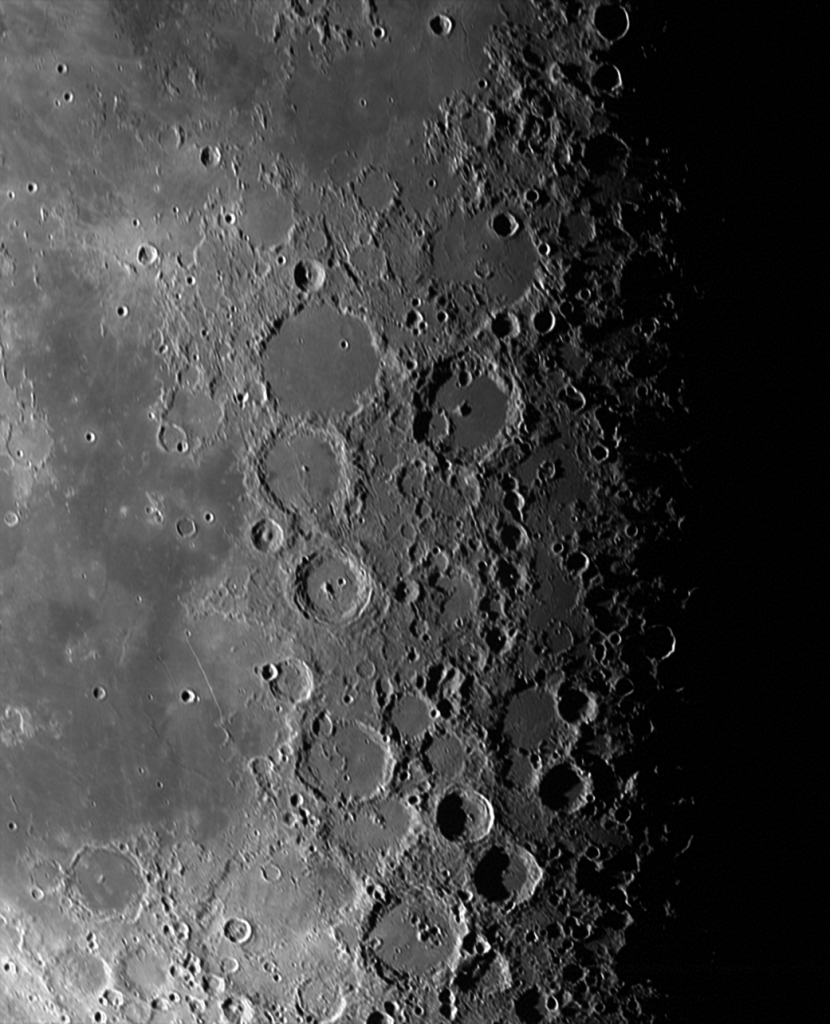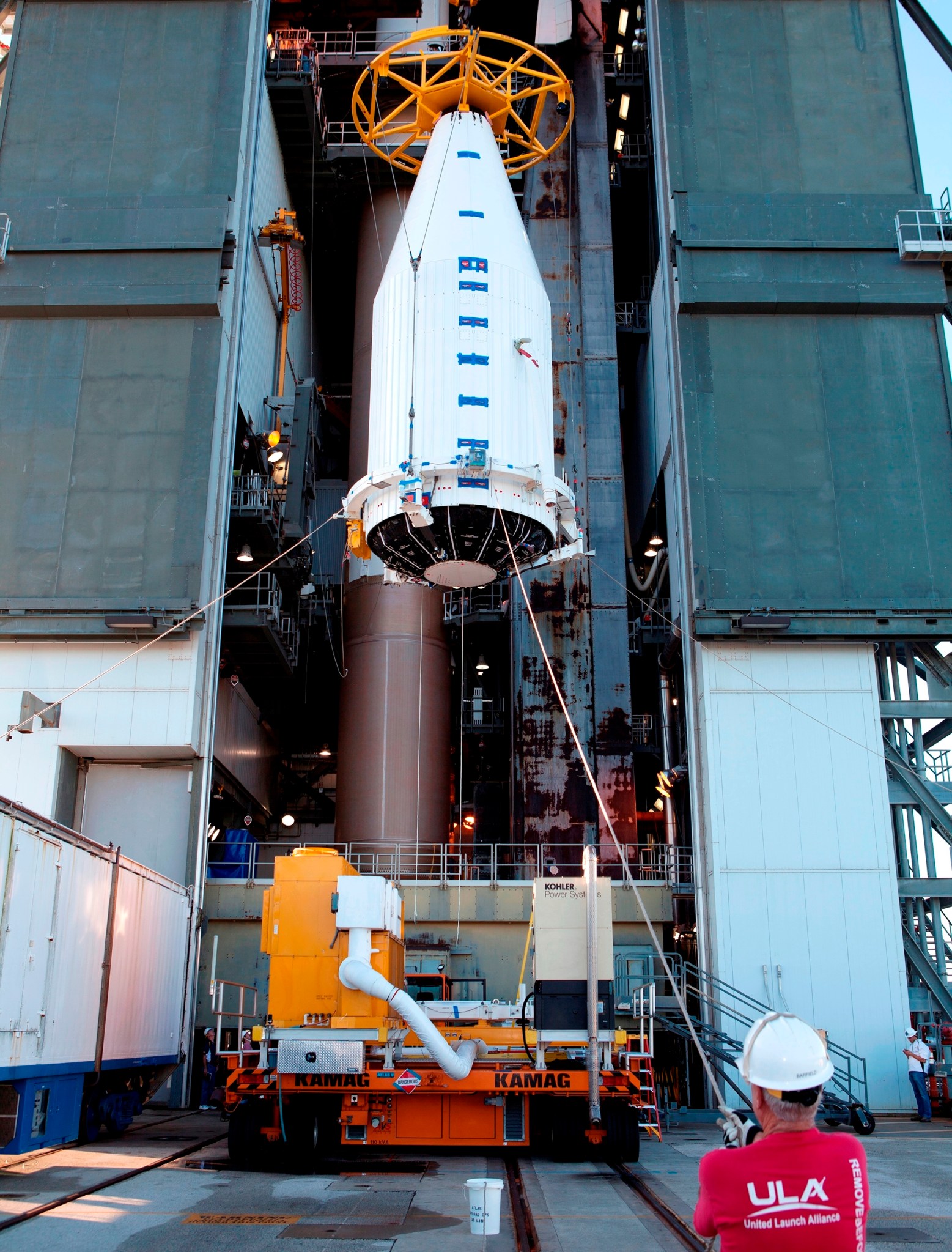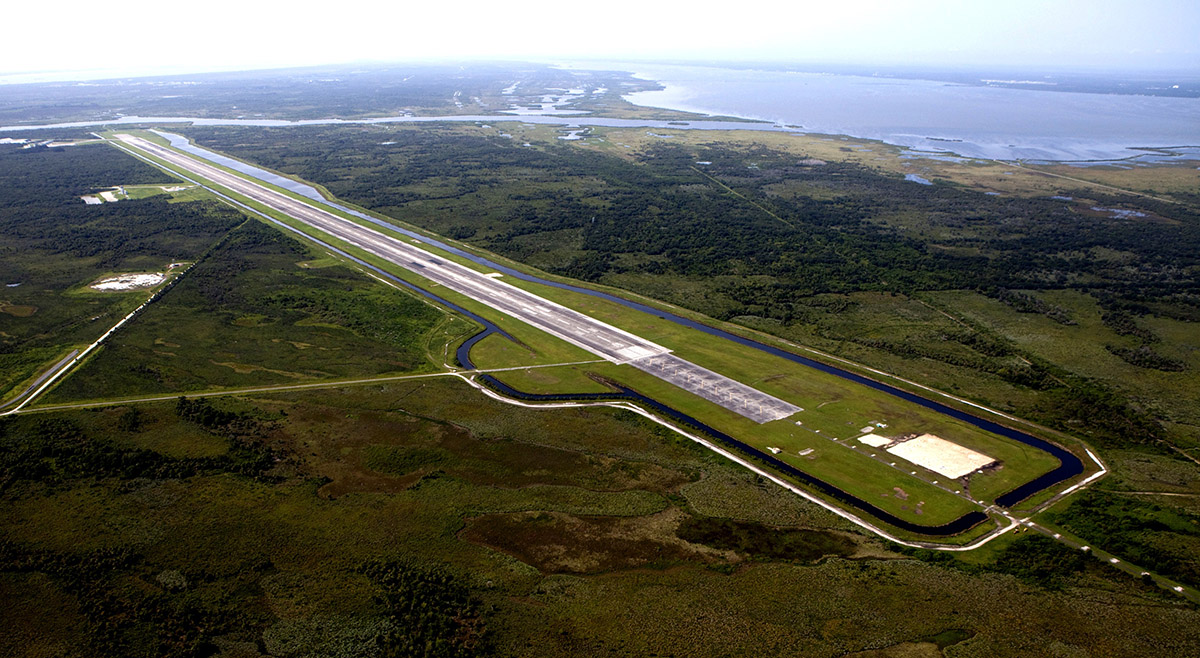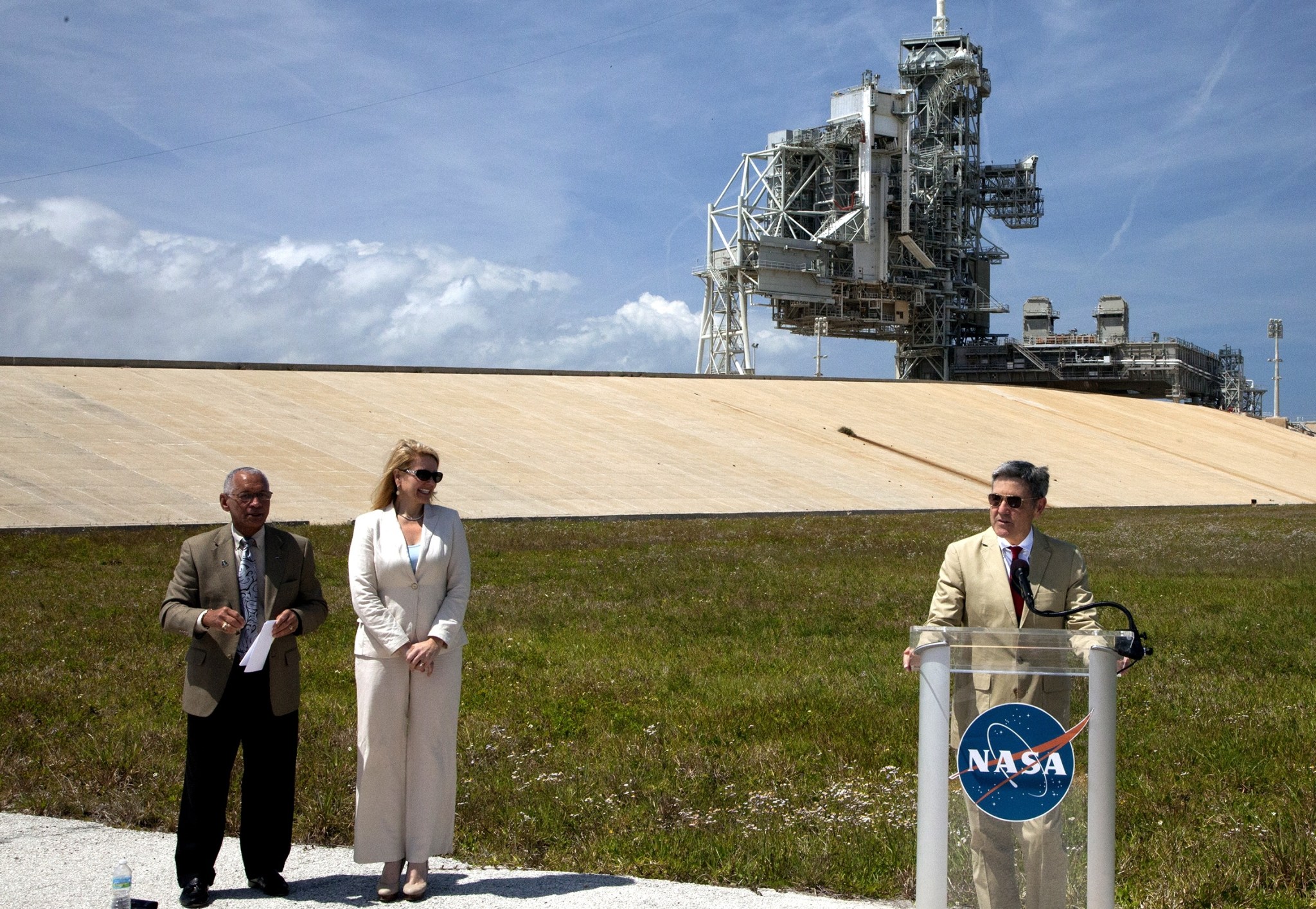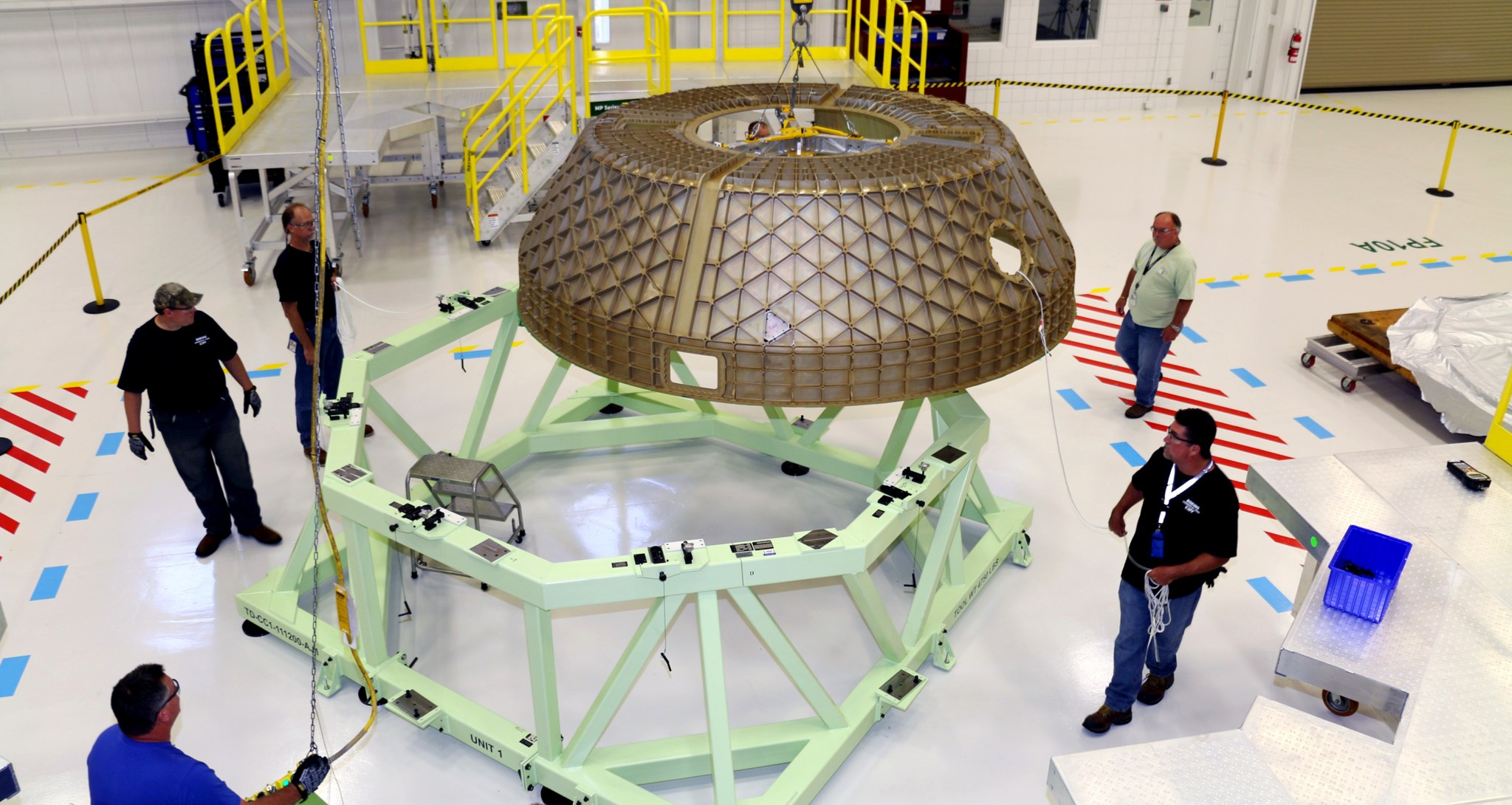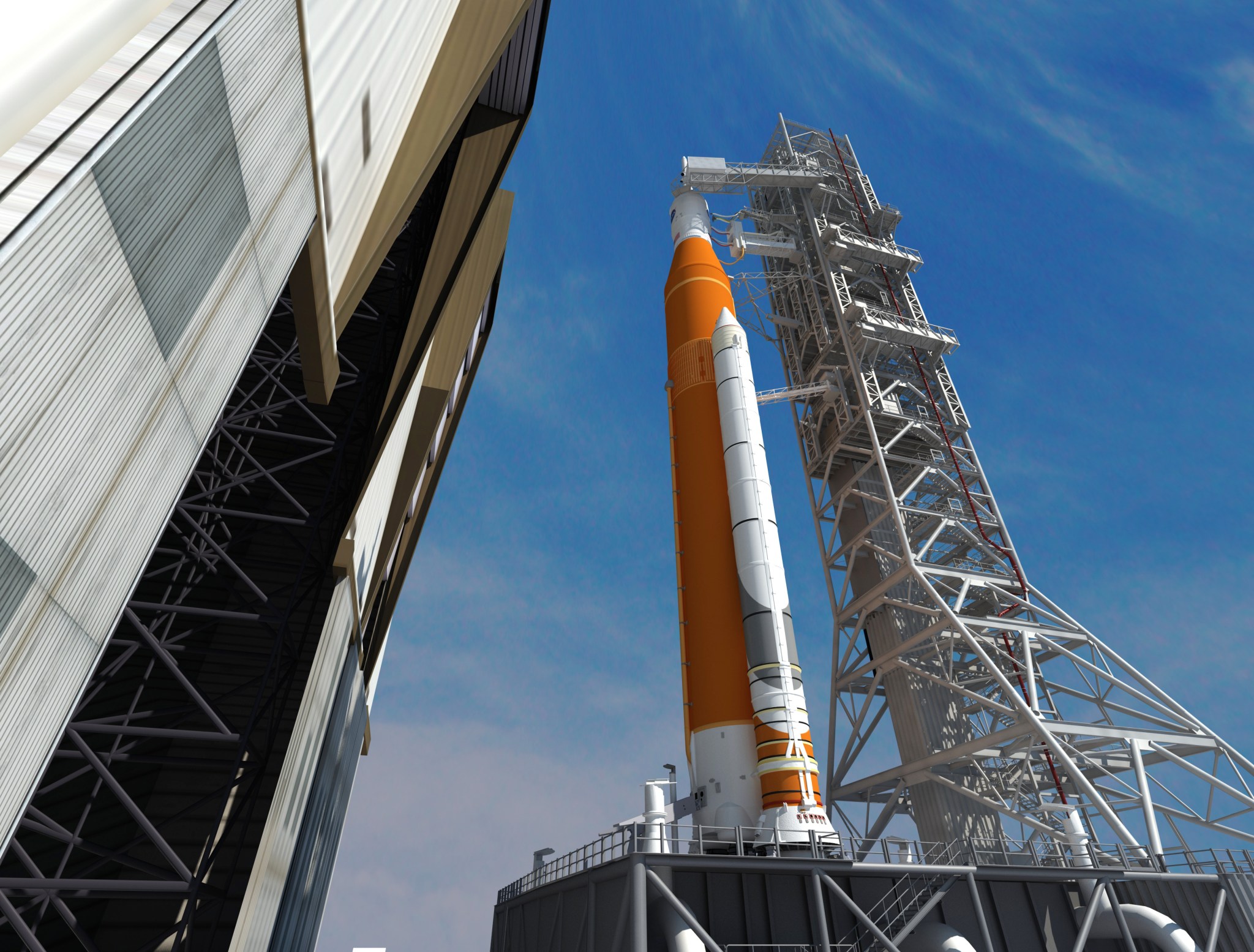By Bob Granath
NASA’s Kennedy Space Center, Florida
For more than 50 years, NASA has reached new heights and revealed the unknown to benefit all of humanity. Spaceflight in the 21st century will see the space around Earth open for research and commercial enterprise like never before.
NASA has sent robotic envoys throughout the solar system on continuing missions of discovery. Astronauts aboard the International Space Station are conducting research not possible on Earth, helping advance the human journey to Mars. NASA’s Kennedy Space Center in Florida helps make all of this possible as a multi-user spaceport, enabling research, processing and launch site operations for government and commercial customers.
Much of the science and supplies destined for the space station comes through Kennedy as part of NASA’s Commercial Resupply Services Program. Across the center, preparations are underway to send astronauts farther than ever before, aboard the Orion spacecraft, launched by the Space Launch System rocket.
The first flight test of an Orion spacecraft was launched Dec. 5, 2014. Lifting off atop a United Launch Alliance Delta IV Heavy rocket, Orion soared 3,604 miles above Earth. As such, it became the first human-rated vehicle to leave low-Earth orbit in 42 years.
The flawless flight test was a first step in the agency’s plans to send humans on the journey to Mars. It also demonstrated that through Kennedy’s leadership, the center’s workforce accomplished the considerable task of reinventing their approach to operating the world’s leading spaceport.
Kennedy was a hub of activity supporting processing, launch and landings during America’s 30-year Space Shuttle Program. Thousands of skilled engineers and technicians supported missions that made possible unprecedented achievements in the utilization of space. Shuttle crews deployed and serviced the Hubble Space Telescope, and built the International Space Station involving the world’s best innovators.
Following the conclusion of shuttle flights and reductions in the size of the workforce, a new approach was required. Additionally, President Barack Obama challenged NASA and the nation to develop a new spacecraft, designed for long journeys to allow the nation to send humans to an asteroid and, ultimately, a landing on Mars.
Kennedy Director Bob Cabana points out that the Florida spaceport now is well on its way to meeting the president’s challenge.
“Here at the Kennedy Space Center, we are continuing to help develop the Orion crew vehicle, and support the Space Launch System rocket with exploration ground systems that will one day send astronauts on trips beyond low-Earth orbit,” he said.
The SLS will be the most powerful rocket ever built and will enable astronauts in the Orion spacecraft to explore distant destinations.
The space center’s NASA-industry team also has met Cabana’s objective for a spaceport ready to meet diverse challenges of the future.
“Our confidence in meeting the president’s objective and our future challenges is based on the fact that we have an outstanding, highly skilled workforce,” he said. “They have already achieved the goal of building a 21st century space launch complex with modernized infrastructure for more cost-effective operations, serving multiple users.”
Making the best use of taxpayer funded resources has been a key objective from reorganization of the space center’s management structure to providing optimum utilization of available assets.
Existing historic buildings and launch sites in use for more than 50 years are being converted to support a modern spaceport equipped with state-of-the art technology meeting the diverse needs of another half-century.
Ongoing improvements over the past few years include upgrades to facilities such as the Vehicle Assembly Building, mobile launcher, crawler–transporter and Launch Complex 39B – a historic pad that will launch astronauts aboard the Orion spacecraft, atop an SLS rocket.
Other center facilities no longer needed are being turned over to industry partners to take advantage of their unique capabilities.
In June 2012, NASA signed a partnership agreement with Craig Technologies to maintain an inventory of unique processing and manufacturing equipment for future mission support at the Cape Canaveral, Florida, site formerly known as the NASA Shuttle Logistics Depot. In its new role, it is now the Aerospace and Defense Manufacturing Center.
During the past year, NASA signed a 30-year property agreement with Space Florida for the operations and management of the Shuttle Landing Facility. Now a variety of commercial and government partners will have access to use the three-mile long runway.
In September, Blue Origin announced they plan to build rockets at Exploration Park on Kennedy property. The company also leased Launch Complex 36 at Cape Canaveral Air Force Station where they plan to launch their orbital launch vehicle.
While partners from industry and academia are finding new uses for Kennedy’s unique assets, commercial providers soon will take astronauts to and from the International Space Station.
Through NASA’s Commercial Crew Program, commercial partners SpaceX and The Boeing Company are developing safe, reliable and cost-effective access to and from low-Earth orbit with American-built rockets by the end of 2017. Boeing’s CST-100 Starliner and SpaceX’s Crew Dragon are the next step toward ferrying astronauts to and from the ISS.
To prepare for these next steps in crew transportation, Bay 3 of the space shuttle era’s Orbiter Processing Facility now is being modernized by Boeing as the Commercial Crew and Cargo Processing Facility. There, Boeing plans to prepare its Starliner spacecraft under development.
In 2014, NASA signed a property agreement with SpaceX for the use and operation of Launch Complex 39A where it will launch the Falcon 9 Heavy rocket with its Crew Dragon spacecraft.
These are all tangible steps toward meeting the president’s challenge and firmly establishing that Kennedy has become a premier multi-user spaceport regularly launching to low-Earth orbit and beyond.
Missions beyond low-Earth orbit are already underway, including the extensive robotic reconnaissance of Mars. In 2011, the Kennedy team launched the Mars Science Laboratory with its Curiosity rover now studying the surface. In 2013, the Mars Atmosphere and Volatile EvolutioN, or MAVEN, spacecraft was launched from Cape Canaveral and now is orbiting the Red Planet. Scheduled for launch in 2018, the InSight mission will launch a lander to Mars designed to drill beneath the surface and investigate the planet’s deep interior.
“Allowing industry to provide our transportation to low-Earth orbit, means the NASA team can focus on what we do best – exploration,” said Cabana. “We’ve got a lot of work going on here at Kennedy as we advance the mission to put boots on Mars.”
























